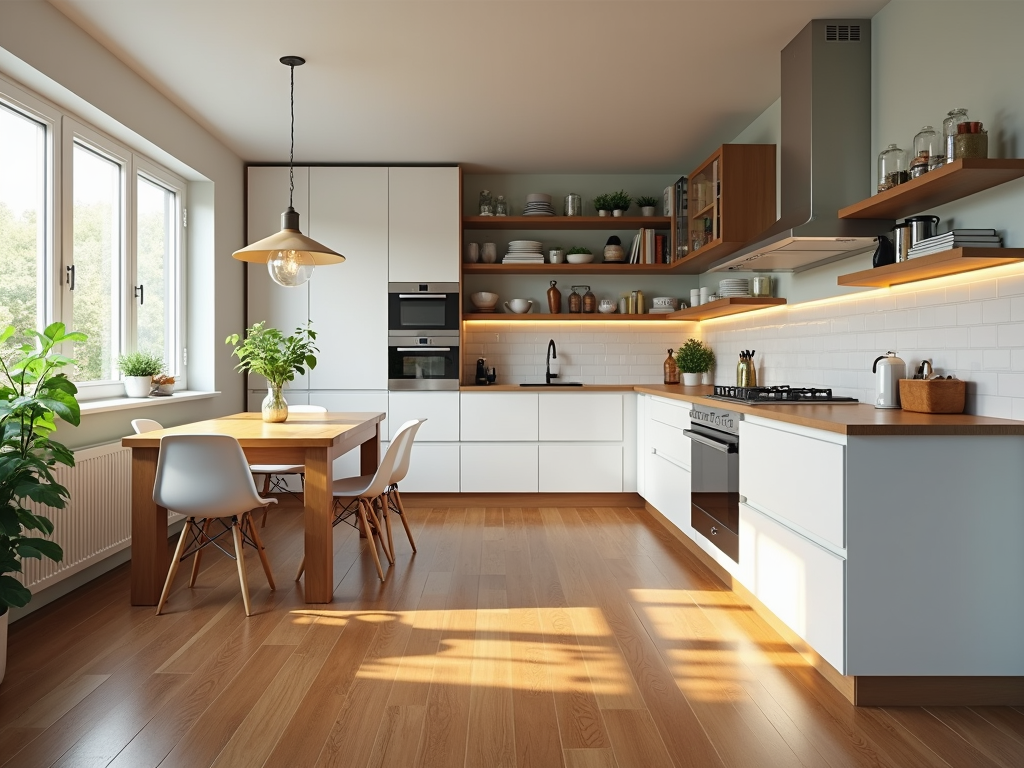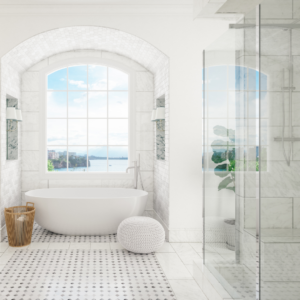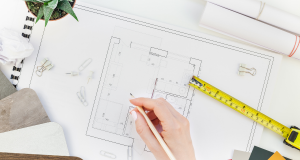If you’re thinking about upgrading your floors, you might be surprised at how many options there are. Some look amazing but require a lot of upkeep. Others are durable but might not match your style. And then there’s the challenge of picking the right material for each room. What works in a bedroom won’t always hold up in a kitchen or bathroom.
The good news? Choosing the perfect flooring isn’t as overwhelming as it seems – it just comes down to understanding what each space needs.
Finding the Right Fit for Your Living Spaces
Living rooms and family rooms are the heart of a home. These are the spaces where people gather, whether for movie nights, game days, or just lounging around. Because they get so much use, you want a floor that can handle foot traffic while still looking great.
Hardwood has always been a top choice for living rooms, and for good reason. It’s warm, timeless, and adds value to a home. The downside? It can scratch easily, especially if you have pets or move furniture around often. That’s why a lot of homeowners now go for luxury vinyl planks (LVP) instead. They have the look of wood but are more resistant to water, scratches, and daily wear. If comfort is your priority, though, carpet might be the way to go. There’s nothing like stepping onto a soft, warm floor, especially in colder months. Just be prepared for regular vacuuming to keep it looking fresh.
If you’re looking for high-quality flooring in West Chester, OH, or another location, there are plenty of great options to match every room in your home. Investing in the right floor not only makes your space look better but also saves you money on maintenance and replacements down the line.
Making the Kitchen and Bathroom Work for You
Kitchens and bathrooms are completely different from living rooms when it comes to flooring. These spaces deal with spills, splashes, and a lot of moisture, which means your floor has to be waterproof or at least highly resistant to damage.
Tile is a tried-and-true option, especially for bathrooms. It’s waterproof, easy to clean, and available in just about every style imaginable. Kitchens, on the other hand, don’t always need tile. Many homeowners love the look of wood in a kitchen, but traditional hardwood isn’t the best idea since water can cause warping. This is where LVP comes in again-it gives you that wood look but without the risk. It’s also more comfortable to stand on for long periods, which is a big plus when cooking.
In bathrooms, avoiding wood altogether is usually the safest bet. Even sealed hardwood can absorb moisture over time, leading to damage. Some laminates are made to handle moisture better, but luxury vinyl or tile is still the more reliable option.
The Best Floors for a Comfortable Bedroom
When it comes to bedrooms, comfort is key. Unlike kitchens and hallways, these rooms don’t deal with as much wear and tear, so durability isn’t the biggest concern. Instead, it’s about what feels good underfoot.
Carpet is still one of the most popular choices for bedrooms. It’s warm, soft, and absorbs sound, making your room feel cozier and quieter. But not everyone loves the idea of dealing with stains or allergens trapped in carpet fibers. If you want a cleaner look, hardwood or laminate can be great alternatives. You can always add a large area rug for warmth without committing to full carpeting.
Why Basements Need Special Consideration
Basements are a unique challenge when it comes to flooring. Because they’re below ground, they often deal with more moisture than other areas of the home. That rules out anything that isn’t water-resistant.
Luxury vinyl is one of the best choices for basements because it handles moisture well while still looking stylish. If you’re not worried about warmth, tile works too, but it can feel cold underfoot. Some people choose to seal and stain the concrete floor instead, giving the space an industrial, low-maintenance look.
Carpet in a basement is a bit of a gamble. If there’s ever a moisture issue, it can lead to mold or mildew. If you really want carpet in your basement, carpet tiles are a safer choice since they can be replaced section by section if needed.
Hallways, Entryways, and Other High-Traffic Areas
Some areas of the home see more action than others, and your flooring needs to keep up. Entryways, hallways, and stairs all get a lot of foot traffic, which means they need something durable.
Tile is a great option for entryways because it holds up against dirt, water, and constant use. Hardwood can also be a beautiful choice, but it may show wear faster, especially in busy households. Options like vinyl flooring can be a good option as it is water and slip resistant.
Carpet in these areas is trickier. It might seem like a cozy choice for hallways, but dirt and stains can become a problem. If you love the look of carpet on stairs, consider using a durable runner instead of full carpeting for a balance between comfort and practicality.
Upgrading Your Floors the Right Way
Choosing the perfect flooring isn’t just about aesthetics, it’s about finding the right material for each space. A cozy carpet might be ideal for a bedroom but impractical in a high-traffic hallway. Hardwood adds warmth and character to a living room but won’t handle the moisture of a bathroom. Tile flooring often works well in spaces that demand durability and moisture resistance. A quick search online for “tile flooring near me” can reveal plenty of options that offer both style and practicality. Understanding how different materials perform in various environments is key to making the best choice for any space.
No matter what you choose, a well-picked floor makes a home feel complete. Whether you’re going for warmth, durability, or style, there’s a perfect match for every room-you just have to find the one that fits your lifestyle best.




